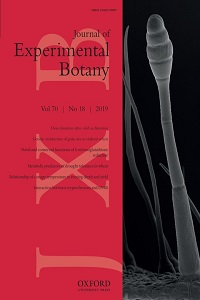Salinity tolerance in chickpea is associated with the ability to ‘exclude’ Na from leaf mesophyll cells
Abstract
Salinity tolerance is associated with Na ‘exclusion’ from, or ‘tissue tolerance’ in, leaves. We investigated whether two contrasting chickpea genotypes, salt-tolerant Genesis836 and salt-sensitive Rupali, differ in leaf tissue tolerance to NaCl. We used X-ray microanalysis to evaluate cellular Na, Cl, and K concentrations in various cell types within leaflets and also in secretory trichomes of the two chickpea genotypes in relation to photosynthesis in control and saline conditions. TEM was used to assess the effects of salinity on the ultrastructure of chloroplasts. Genesis836 maintained net photosynthetic rates (A) for the 21 d of salinity treatment (60 mM NaCl), whereas A in Rupali substantially decreased after 11 d. Leaflet tissue [Na] was low in Genesis836 but had increased markedly in Rupali. In Genesis836, Na was accumulated in epidermal cells but was low in mesophyll cells, whereas in Rupali cellular [Na] was high in both cell types. The excessive accumulation of Na in mesophyll cells of Rupali corresponded to structural damage to the chloroplasts. Maintenance of photosynthesis and thus salinity tolerance in Genesis836 was associated with an ability to ‘exclude’ Na from leaflets and in particular from the photosynthetically active mesophyll cells, and to compartmentalize Na in epidermal cells.

